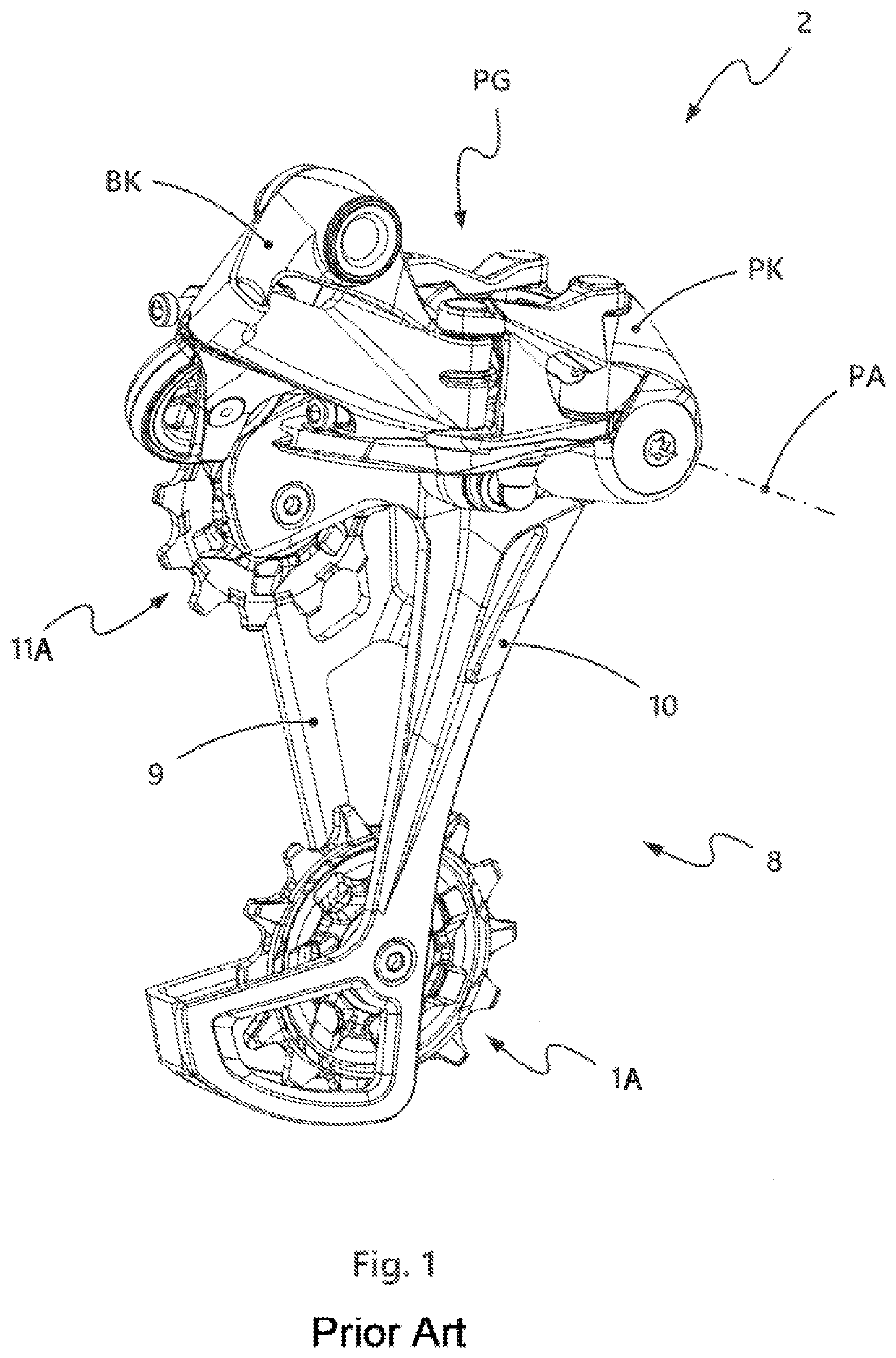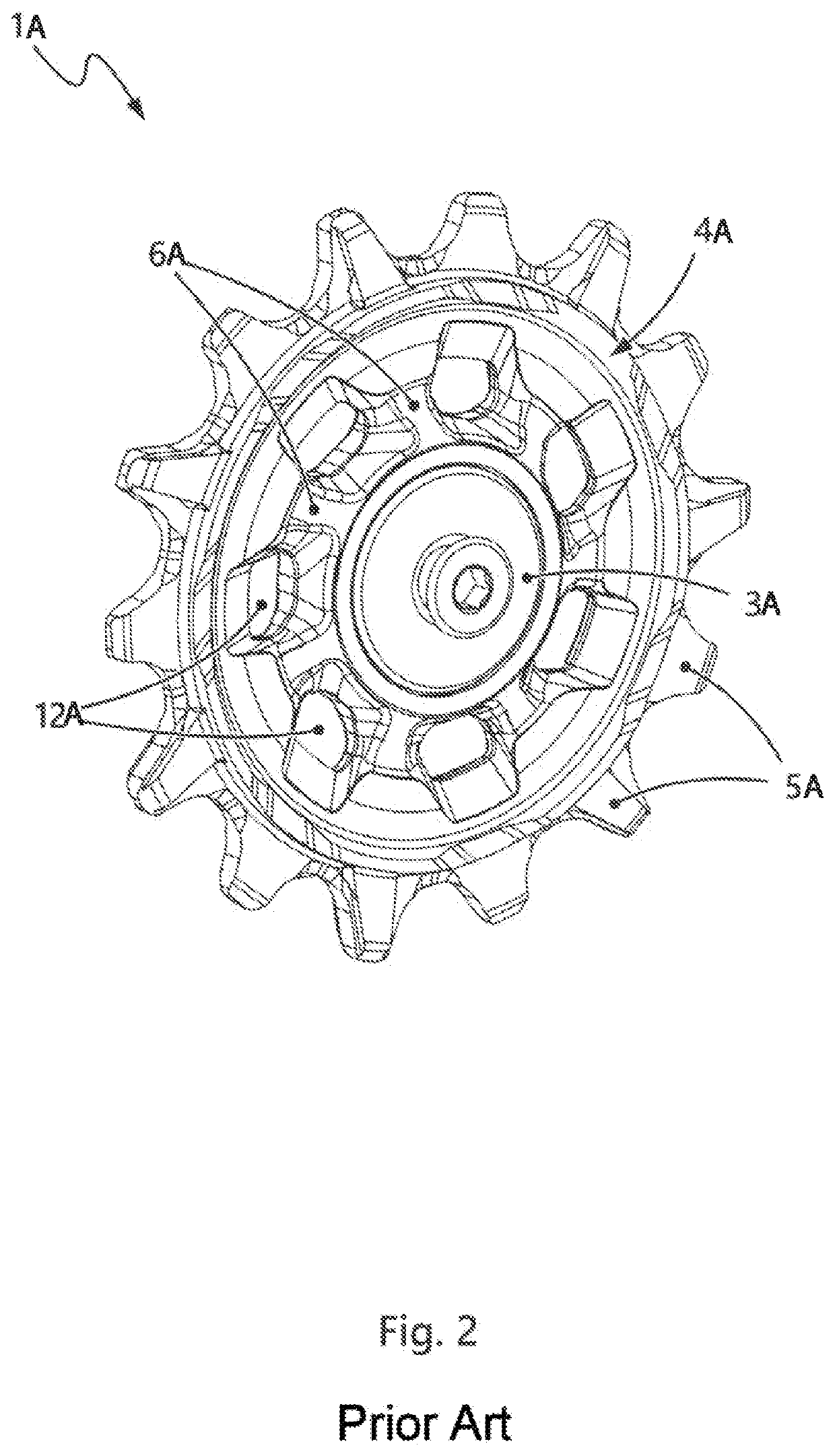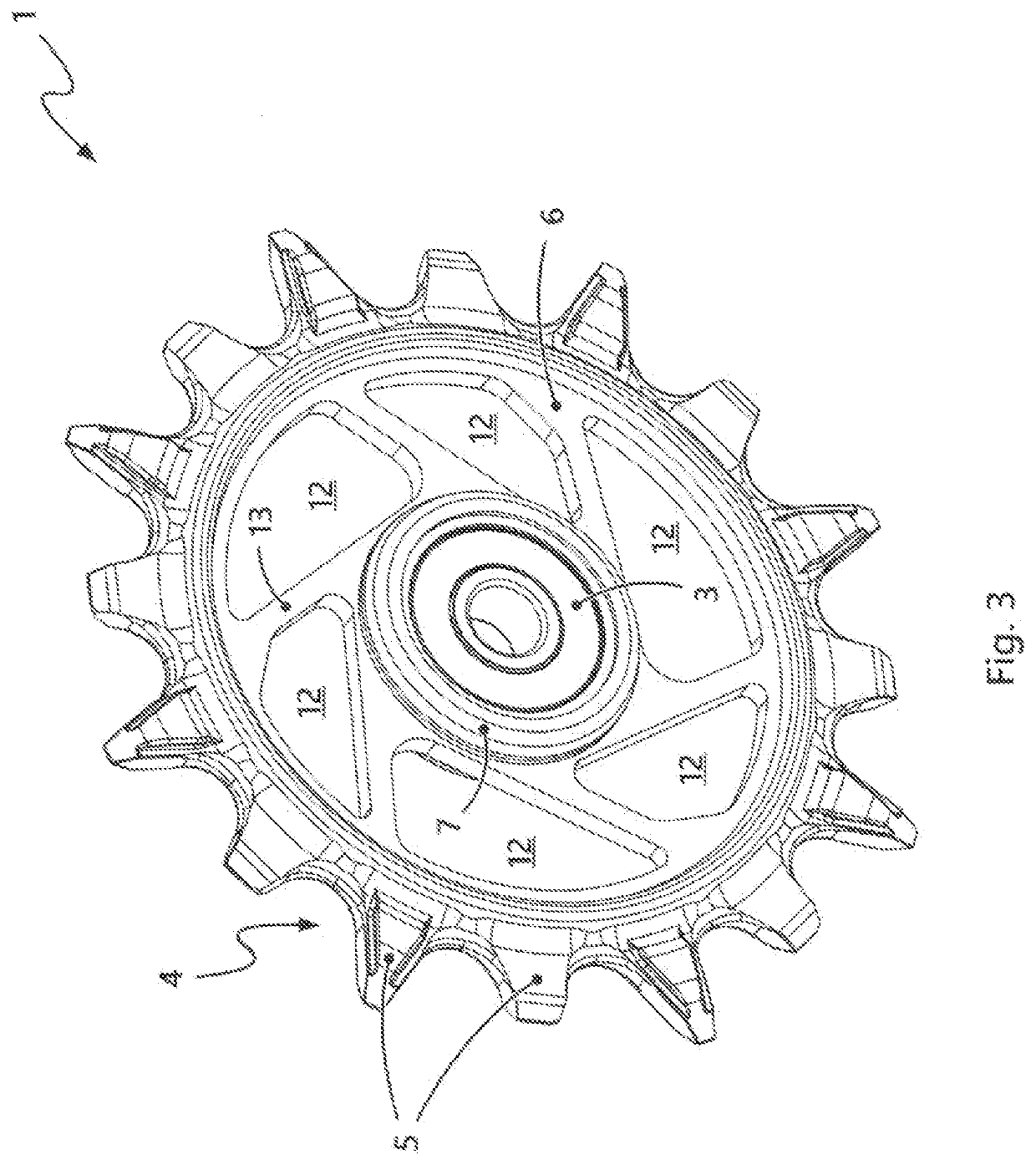Gearshift mechanism roller
a gearshift mechanism and roller technology, applied in mechanical equipment, transportation and packaging, hoisting equipment, etc., can solve the problems of low stiffness and production-induced tolerances resulting from shrinkage processes, disadvantages, and save bearing generation costs, and achieve good self-cleaning ability and high lateral stiffness
- Summary
- Abstract
- Description
- Claims
- Application Information
AI Technical Summary
Benefits of technology
Problems solved by technology
Method used
Image
Examples
Embodiment Construction
[0027]Proceeding from the background described above, it is therefore the object of the present disclosure to provide a chain roller for a bicycle gearshift mechanism, with which the abovementioned disadvantages are overcome. Here, it is the intention to maintain the advantages of both gearshift mechanism rollers composed of plastic and of those composed of metal.
[0028]The object is achieved by a chain roller having the features of Patent claim 1. The subclaims relate to preferred embodiments.
[0029]The chain roller has, in the generic manner, firstly a rotary bearing, a toothed ring with teeth formed thereon, and a support structure which connects the outer ring of the rotary bearing and the toothed ring to one another. The support structure will hereafter also be referred to figuratively as “skeleton”. Depending on the field of use and price category, either ball bearings or plain bearings may be used for the rotary bearing.
[0030]The chain roller is distinguished by the fact that t...
PUM
 Login to View More
Login to View More Abstract
Description
Claims
Application Information
 Login to View More
Login to View More - R&D
- Intellectual Property
- Life Sciences
- Materials
- Tech Scout
- Unparalleled Data Quality
- Higher Quality Content
- 60% Fewer Hallucinations
Browse by: Latest US Patents, China's latest patents, Technical Efficacy Thesaurus, Application Domain, Technology Topic, Popular Technical Reports.
© 2025 PatSnap. All rights reserved.Legal|Privacy policy|Modern Slavery Act Transparency Statement|Sitemap|About US| Contact US: help@patsnap.com



